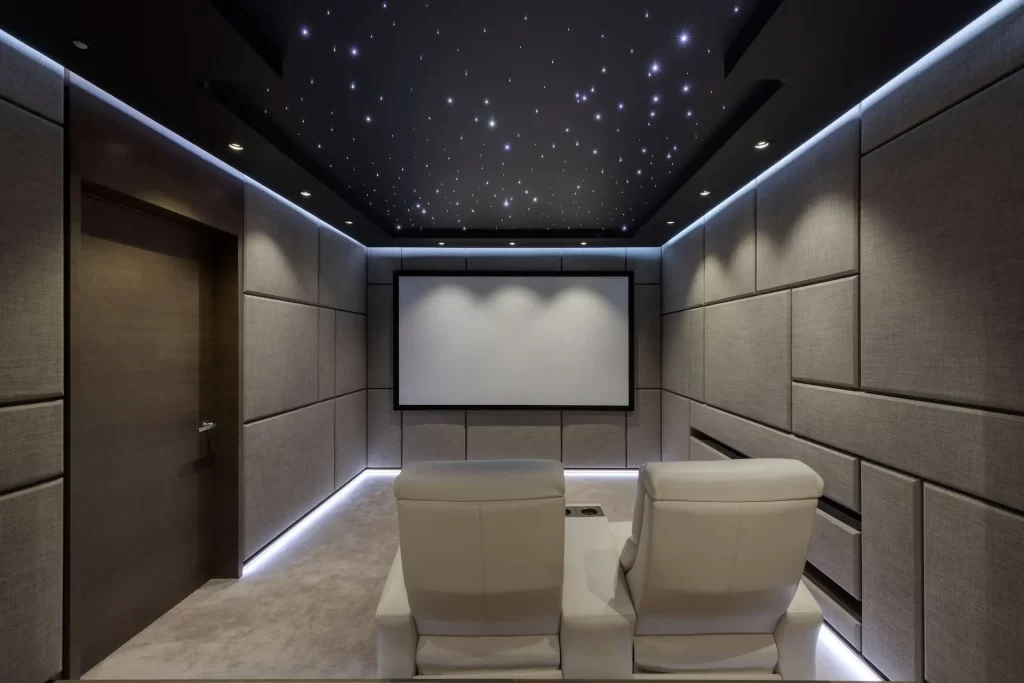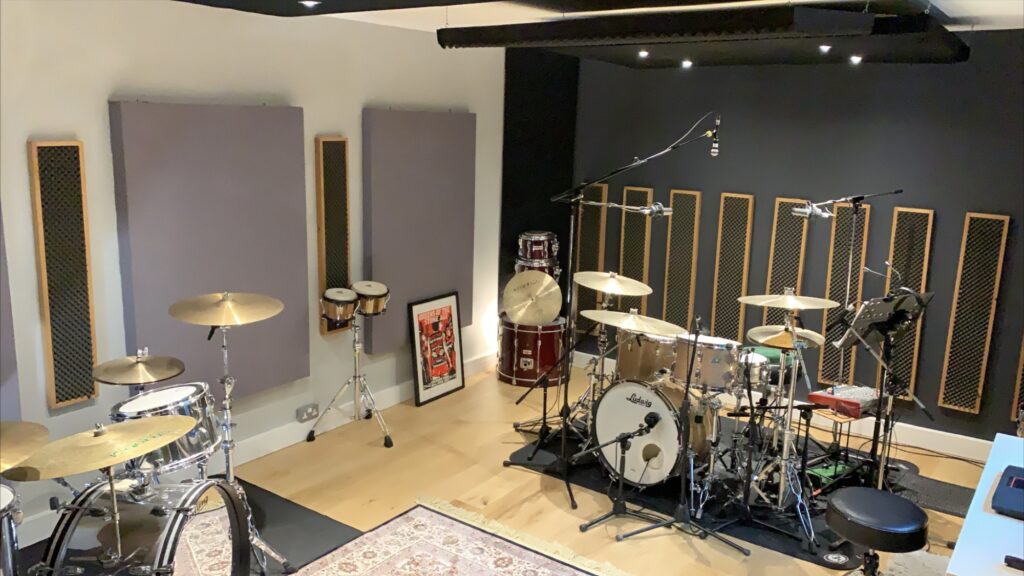When it comes to optimizing the acoustics of a room, whether it’s a home studio, a home theater, or a professional recording space, the debate often arises: which is more effective, acoustic panels or bass traps? Both serve distinct purposes in managing sound within a room, but understanding their differences and applications is crucial in determining which option best suits your needs.
Acoustic Panels
Acoustic panels, also known as sound-absorbing panels, are designed to reduce reverberation and control mid to high-frequency sound reflections within a room. These panels are typically made from materials like fiberglass, foam, or mineral wool and are covered with fabric to enhance their aesthetic appeal.

Key Features and Functions:
- Sound Absorption: Acoustic panels are primarily used to absorb sound energy, thereby reducing echoes and improving clarity in a room. They are effective in managing mid to high-frequency sounds, such as speech, music, and general ambient noise.
- Placement: Acoustic panels are strategically placed on walls, ceilings, or even freestanding in a room to target specific reflection points. They are commonly arranged in clusters or patterns to optimize their effectiveness in absorbing sound waves.
- Aesthetics: With a wide range of fabric colors and designs available, acoustic panels can be customized to complement the décor of any space while enhancing its acoustic performance.
Bass Traps
Bass traps, on the other hand, are acoustic treatments designed to address low-frequency sound issues within a room. Low-frequency sound waves, being larger in wavelength, tend to accumulate in corners and along wall surfaces, leading to bass buildup and uneven sound distribution.

Key Features and Functions:
- Low-Frequency Absorption: Bass traps are specifically engineered to absorb low-frequency sound waves, ranging from around 30 Hz to 300 Hz or lower. By reducing bass buildup and resonance, bass traps help achieve a more balanced and accurate sound reproduction.
- Placement: Bass traps are typically installed in room corners, where low-frequency energy tends to concentrate. They can also be placed along wall-ceiling junctions and other areas where bass resonance is prominent.
- Variety of Designs: Bass traps come in various designs, including corner-mounted traps, membrane traps, and porous absorbers, each tailored to address specific low-frequency issues within a room.
Which is More Effective?
Determining whether acoustic panels or bass traps are more effective depends on the specific acoustic characteristics of the room and the desired outcome. In most cases, a combination of both acoustic panels and bass traps is recommended for comprehensive sound management.
Contact Waseem Muhammad Technical Soundproofing Expert in Dubai: +971 50 209 7517
Conclusion
Both acoustic panels and bass traps play vital roles in optimizing room acoustics and achieving a balanced sound environment. Understanding their unique characteristics and applications is key to selecting the most effective solution for your space. By combining these treatments strategically, you can create a room that not only looks great but sounds exceptional as well.
FAQs:
Can acoustic panels eliminate all echoes in a room?
While acoustic panels can significantly reduce echoes and reflections, they may not eliminate them entirely, especially in larger or acoustically challenging spaces. Strategic placement and sufficient panel coverage are essential for optimal results.
Are bass traps only necessary for music production studios?
Bass traps are beneficial for any room where low-frequency issues are present, including home theaters, listening rooms, and recording studios. They help achieve clearer and more accurate bass response, enhancing the overall listening experience.
Can I use bass traps instead of acoustic panels for soundproofing?
Bass traps and acoustic panels serve different purposes in room acoustics. While bass traps address low-frequency issues, acoustic panels primarily target mid to high-frequency reflections. Using both types of treatments in combination is ideal for achieving balanced sound control.
How do I know how many acoustic panels or bass traps I need for my room?
The quantity and placement of acoustic treatments depend on various factors, including room size, shape, furnishings, and intended use. Consulting with an acoustic professional or utilizing acoustic modeling software can help determine the optimal treatment strategy for your space.
Can I make my own acoustic panels or bass traps?
DIY acoustic panels and bass traps can be effective if constructed properly using appropriate materials and techniques. However, for optimal performance and durability, consider investing in professionally manufactured acoustic treatments tailored to your specific acoustic needs.




